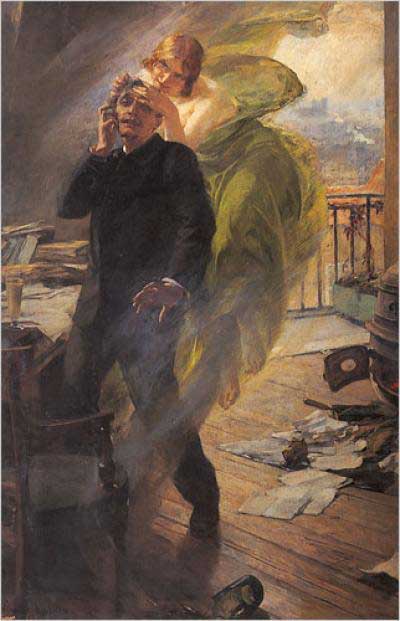Absinthe's Mind-Altering Mystery Solved

An analysis of century-old bottles of absinthe — the kind once quaffed by the likes of van Gogh and Picasso to enhance their creativity — may end the controversy over what ingredient caused the green liqueur's supposed mind-altering effects .
The culprit seems plain and simple: The century-old absinthe contained about 70 percent alcohol, giving it a 140-proof kick. In comparison, most gins, vodkas and whiskeys are just 80- to 100-proof.
In recent years, the psychedelic nature of absinthe has been hotly debated. Absinthe was notorious among 19th-century and early 20th-century bohemian artists as "the Green Fairy" that expanded the mind. After it became infamous for madness and toxic side effects among drinkers, it was widely banned.
The modern scientific consensus is that absinthe's reputation could simply be traced back to alcoholism, or perhaps toxic compounds that leaked in during faulty distillation. Still, others have pointed at a chemical named thujone in wormwood, one of the herbs used to prepare absinthe and the one that gives the drink its green color. Thujone was blamed for "absinthe madness" and "absinthism," a collection of symptoms including hallucinations, facial tics, numbness and dementia.
Prior studies suggested that absinthe had only trace levels of thujone. But critics claimed that absinthe made before it got banned in France in 1915 had much higher levels of thujone than modern absinthe produced since 1988, when the European Union lifted the ban on making absinthe.
"Today it seems a substantial minority of consumers want these myths to be true, even if there is no empirical evidence that they are," said researcher Dirk Lachenmeier, a chemist with the Chemical and Veterinary Investigation Laboratory of Karlsruhe in Germany.
Lachenmeier and his colleagues analyzed 13 samples of absinthe from old, sealed bottles in France, Switzerland, Italy, Spain, the Netherlands and the United States dated back to the early 1900s before the ban. After uncorking the bottles, they found relatively small concentrations of thujone in that absinthe, about the same as those in modern varieties.
Sign up for the Live Science daily newsletter now
Get the world’s most fascinating discoveries delivered straight to your inbox.
Laboratory tests found no other compound that could explain absinthe's effects. "All things considered, nothing besides ethanol was found in the absinthes that was able to explain the syndrome of absinthism," Lachenmeier said. (Ethanol is a word for common drinking alcohol.)
The scientists are set to detail their findings in the May 14 issue of the Journal of Agricultural and Food Chemistry.










